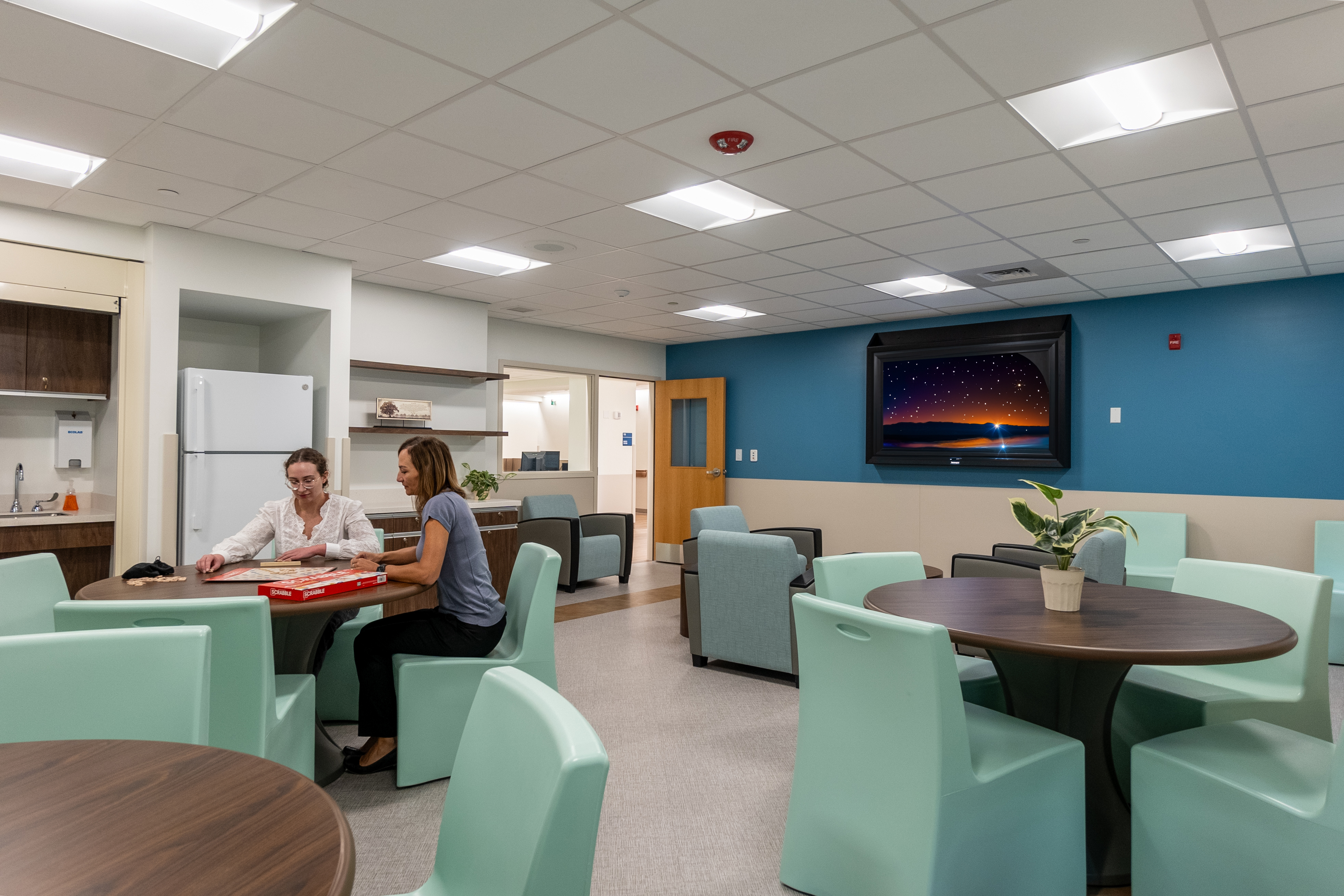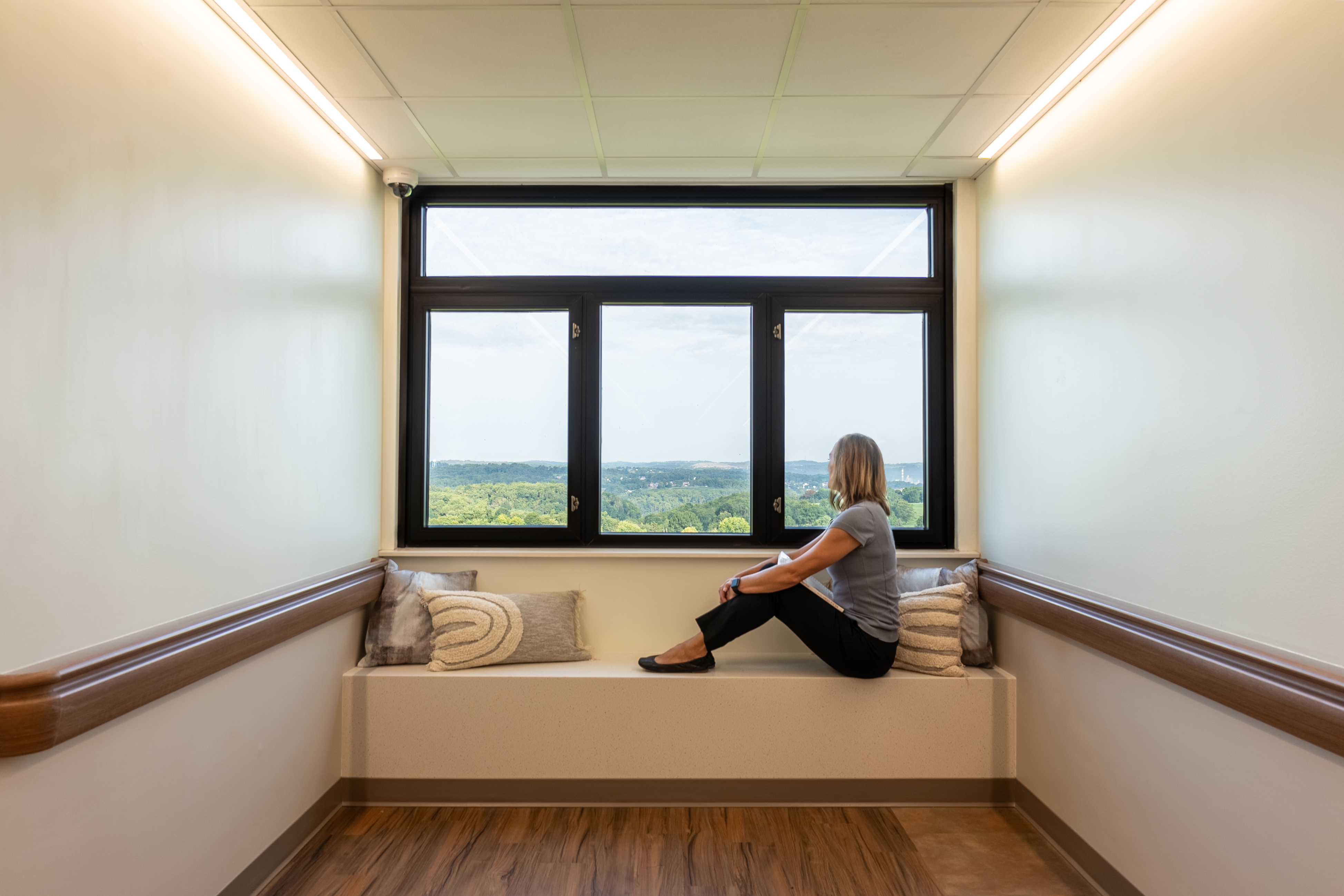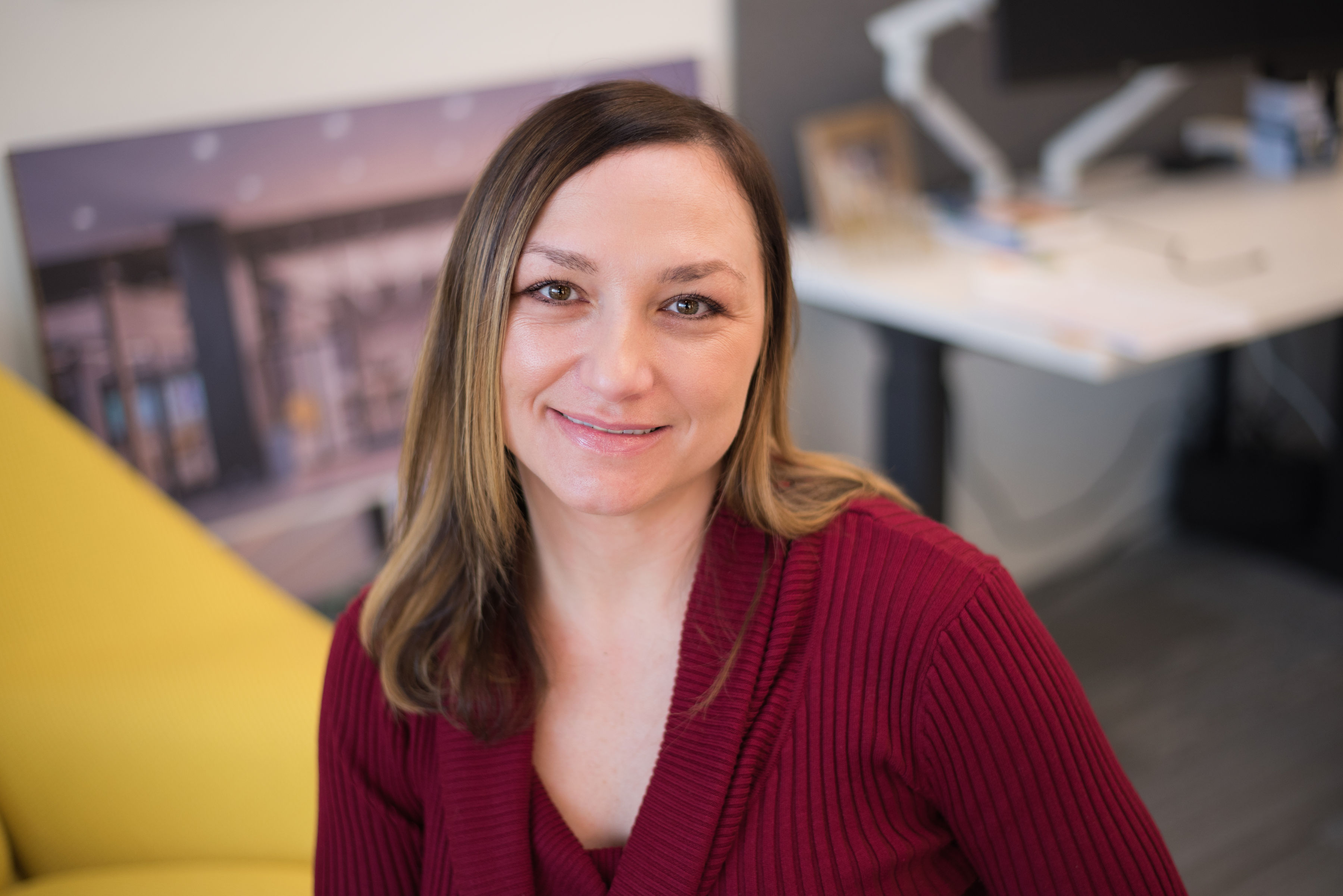Personal experience can inspire better design—even when that experience was challenging. DesignGroup Interior Designer Heather Clark found inspiration in tragedy. And today, detox patients in rural Pennsylvania have a resource uniquely designed to help them heal.
By Heather Clark, Healthcare Interior Designer, NCIDQ, CHID, EDAC
Detox is the first step to getting clean. As our nation is all too familiar, withdrawal from various substances can be an arduous, life-threatening experience. It is vital for people in recovery to enter a facility designed for the most physically challenging part of their journey to recovery.
I recently concluded a renovation project for Penn Highlands Mon Valley Hospital in Monongahela, PA. It was a tremendously fulfilling experience, not just because it exceeded the needs of our client, who now has a facility designed specifically for these people in need. My connection to the project goes much deeper. It was personal.
Growing up an only child, I was blessed with a cousin who was like a little brother to me. In high school he suffered a sports injury, and during rehab he was prescribed narcotic painkillers. Like so many young people in recent years, he became addicted to them. His addiction led to heroin use, which eventually led to his death—attributed to heroin laced with fentanyl. Again, like so many young people today.
My cousin fought his addiction for over 10 years. He was in and out of treatment facilities while trying hard to work and attend school. He once stayed clean for nearly a year. But he never found the right facility for a full recovery, nor the professionals to truly push him through.

Inspired by Personal Experience
I thought of my cousin every day as I worked on this project. I imagined how he might have felt entering a hospital detox unit, scared and alone, frustrated with himself. I did my best to channel that empathy to a solution that would help more people like him.
I had a partner in this project, who also brought personal experience to the task—but from the professional side. Mimi Fablo is a consultant in medical detoxification hired by the hospital to assist our team. Early in her career, Mimi had served as a nurse, working her way to up hospital leadership before leaving to consult on projects like this.
Set in a rural community dealing with the opioid crisis every day, PHMV's new detox unit is now a model for helping people recover from addiction and crisis. We’re incredibly proud of it. “Together,” Mimi likes to say, “we wrote a story that combined consultant, designers, hospital leaders, and staff.”

Following Guidelines
Designing a medical detox unit requires a mix of codes, treatment intent, staff, and safety to create a space that is not only functional, clean, well-lit, but also conveys hope. “A no-judgement, welcoming space,” as Mimi describes it. Detox clients at a hospital, she points out, are there voluntarily. “If they so choose to end treatment, they can merely walk-out,” she says—unlike a behavioral health unit, where the client is essentially locked in. Creating a detox unit within a hospital must be approached differently.
Hospitals must follow stricter codes for construction & renovation. From a FGI Guideline standpoint, it needs to meet those of a behavioral health unit within the 2022 guidelines, which includes anti-ligature requirements (to prevent patient self harm).
Most patients are evaluated in this center, and in many cases stay. But detox patients often require additional care for other medical issues, such as malnutrition, blood disorders, and more. Behavioral health might also need to be addressed. In total, this project resulted in 14 bed units configured for four levels of care.

Using Nature to Inspire Hope
The space we created brings the outdoors in, which provides a positive distraction and aids in with the healing process. Despite it being an older facility, we created spaces that are unique and therapeutic. Patients here are broken and looking to be healed; the beautiful, pastoral views provide calm and biophilic benefits.
The secret to all that light? Total reconfiguration of what had previously been a med surgical unit. The space had been blocked in by restrooms; we relocated them, replacing them with large windows and adding benches to take respite. Patients and visitors see verdant fields with deer and grazing cows. All in a facility that’s fully compliant with health and safety requirements.
Not only does the space fill patients with hope, it’s healing to the professionals who work there, as well. Their jobs are hard; they see their patients struggle and sometimes retreat into addiction. Staffing in the past had been a challenge. Today, people want to work in this department because it looks so different from traditional behavioral health settings.
Creating the interior design of this project was the most rewarding experience of my career. I’m eager to hear more stories about how it benefits their community in the future.

Heather Clark, NCIDQ, EDAC, CHID
Senior Interior Designer
Heather is a resourceful, accomplished and dedicated interior designer with 27 years of experience in conceptual design, space planning and client leadership and a specialty in healthcare planning and interior design. She is adept in working with colleagues and clients to achieve a shared vision that fosters creativity and delivers results that exceed expectations. Heather is an NCIDQ professional with a passion for evidence based design and sustainable design.
